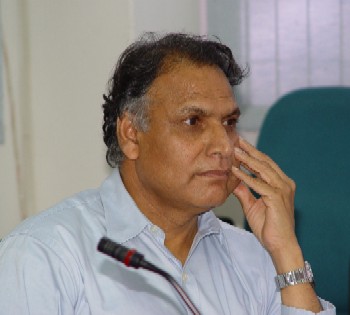By Chandra Bhan Prasad
Hazare’s movement used symbols that were non-Dalit
Recently, a foreign correspondent from a well-known publication wanted to know what I thought about Anna Hazare’s anti-corruption movement. He was accompanied by his Indian colleague. He had done his home work, and asked me to the point question. One of his question’s was — what evidence I have to support that Hazare’s movement was an upper caste uprising against democracy?
I cited some incidents from Bengaluru and Mumbai. During the movement, the upper caste in the two cosmopolitan cities mentioned had come out in the streets in full colours. They had dressed their children — aged five to 10 — in clothes that resembled Mahatma Gandhi, Jawaharlal Nehru, Shubash Chandra Bose and the likes of other freedom fighters. But, there was no Dr BR Ambedkar and no Mahatma Phule.
One cant’ blame the children. They had no idea about the significance of the people they were representing. It was the parents — all from upper caste — who decided what their child would represent. This caught the correspondent’s imagination but he was not convinced.
I asked him to recall what had transpired at the Ramlila Maidan during the movement. I asked him if he could recall the symbols and metaphors that were on display during those 12 days. I looked at the Indian journalist when I asked the question. To start with, Hazare had a large portrait of Bharat Mata in the background. I asked the foreign correspondent that he needed to imagine what Bharat Mata looked like. Lest I was taken to be a radical, I asked the Indian journalist to explain what the greeting Jai Bhim, Jai Bharat stands for.
Often, Dalits greet each other over phone with Jai Bhim-Jai Bharat (glory to Dr BR Ambedkar, glory to India). Dalits love India more than any other social class in the country. The Dalits only have problem — the caste order that exists in India. Since opinion making forums are controlled by caste Hindus, whenever Dalits question the caste order, they are painted as being less patriotic.
In this era of globalisation, it is time that we redefined the words — patriotism and nationalism. But that is another issue.
Bharat Mata imagery is exclusive, and not inclusive. It is not only caste conscious but also religion conscious. It belongs to the upper caste. The Indian journalist nodded in affirmation. There is a long history about the imagery of Bharat Mata, but it is very long and can’t fit within the confines of my humble column. In fact, an entire book can be written about it. The foreign journalist started to see the point that I was trying to make.
Coming back to Hazare’s movement, Bharat Mata’s image was replaced with Gandhiji’s. We will not go into the whys of changing the picture. Is Gandhiji ever accepted in anti-caste movements? Do Dalits ever put up his poster or picture when they are protesting caste oppression? We all are aware that Gandhiji was fond of fasting. But, he never ever fasted against the British Rule.
He also never fasted against the caste order. Therefore, the Dalits have problems with Gandhiji and he continues to be an upper caste Hindu icon. Had any one seen a Dalit movement where Vande Mataram was sung? The national song is non-Dalit and an upper caste symbol.
So, what was the message that Hazare giving to the entire nation?
The foreign correspondent had many questions and was still not fully convinced that Hazare’s movement was as upper caste’s cry against the Indian political system — the Parliament and the Constitution.
To convince him, I narrated a personal experience with the local media — another upper caste territory. When the anchors at news channels asked me the same question — how can you say that Hazare’s movement was an upper caste movement, I had the perfect opening to convince them. I told them that they had monitored the movement round the clock and had the ringside view.
Young mothers with babies in their laps were shown how they were victims of corruption in the country. Questions were put to students, housewives, professionals who had suffered at the hands of a corrupt system. All had a similar answer to give — politicians are corrupt and corrupt parliamentarians can no longer be representatives of the people.
Why did the mediapersons not ask anyone who was there if he was a victim of caste order oppression? Why was the question — corruption is a big problem and so is the caste order — never asked? Why was the question — have you ever participated in an anti-caste movement — not asked?
I apologise to the media for my rather harsh view but the fact remains that it refuses to be non-partisan.
[Courtesy: The Pioneer, September 24, 2011]








